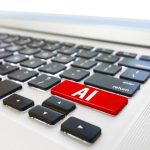Understanding the origins of Mars’s moons, Deimos and Phobos, has long intrigued scientists. Recent advancements in computer simulations have provided a new perspective, bridging gaps left by previous theories. These findings offer a nuanced explanation that aligns more closely with observed orbital characteristics. Additionally, the upcoming Mars Moons eXploration mission (MMX) is set to play a crucial role in uncovering further details.
Research prior to these simulations primarily focused on two models: asteroid capture and collision-induced formation. The capture theory struggled with Mars’s limited gravitational force, making it improbable for the planet to retain captured asteroids in stable orbits. Conversely, the collision model, while explaining circular orbits, failed to account for both moons’ differing distances from Mars. The latest simulations introduce a hybrid approach, addressing these inconsistencies effectively.
How Did Mars’s Moons Form?
The new model suggests that a near miss by a large asteroid resulted in Mars’s moons. Tidal forces from Mars would have torn the asteroid apart, creating numerous fragments. These fragments entered elliptical orbits, which over time, interacted gravitationally to form a debris ring. This ring eventually gave rise to both Phobos and Deimos, explaining their current orbits.
Why Didn’t Previous Models Fully Explain the Moon’s Orbits?
Previous models either couldn’t justify the capture of small asteroids by Mars’s gravity or couldn’t account for the circular orbits of both moons simultaneously. The capture model often resulted in highly elliptical orbits, while the collision model couldn’t explain the presence of two moons at varying distances. The new simulation bridges this gap by showing how fragment interactions can stabilize orbits at different radii.
What Role Will the MMX Mission Play?
The Mars Moons eXploration mission (MMX), launching in 2026, aims to collect samples from Phobos and Deimos. These samples are expected to provide concrete evidence supporting or refuting the new simulation model. By analyzing the composition and structure of the moons, scientists hope to gain deeper insights into their formation and the history of Mars itself.
This innovative approach offers a more comprehensive explanation for the existence and orbits of Mars’s moons. By combining elements of both capture and collision theories, the model accounts for the unique characteristics of Deimos and Phobos. The forthcoming MMX mission stands to validate these simulations, potentially reshaping our understanding of planetary moon formation.










